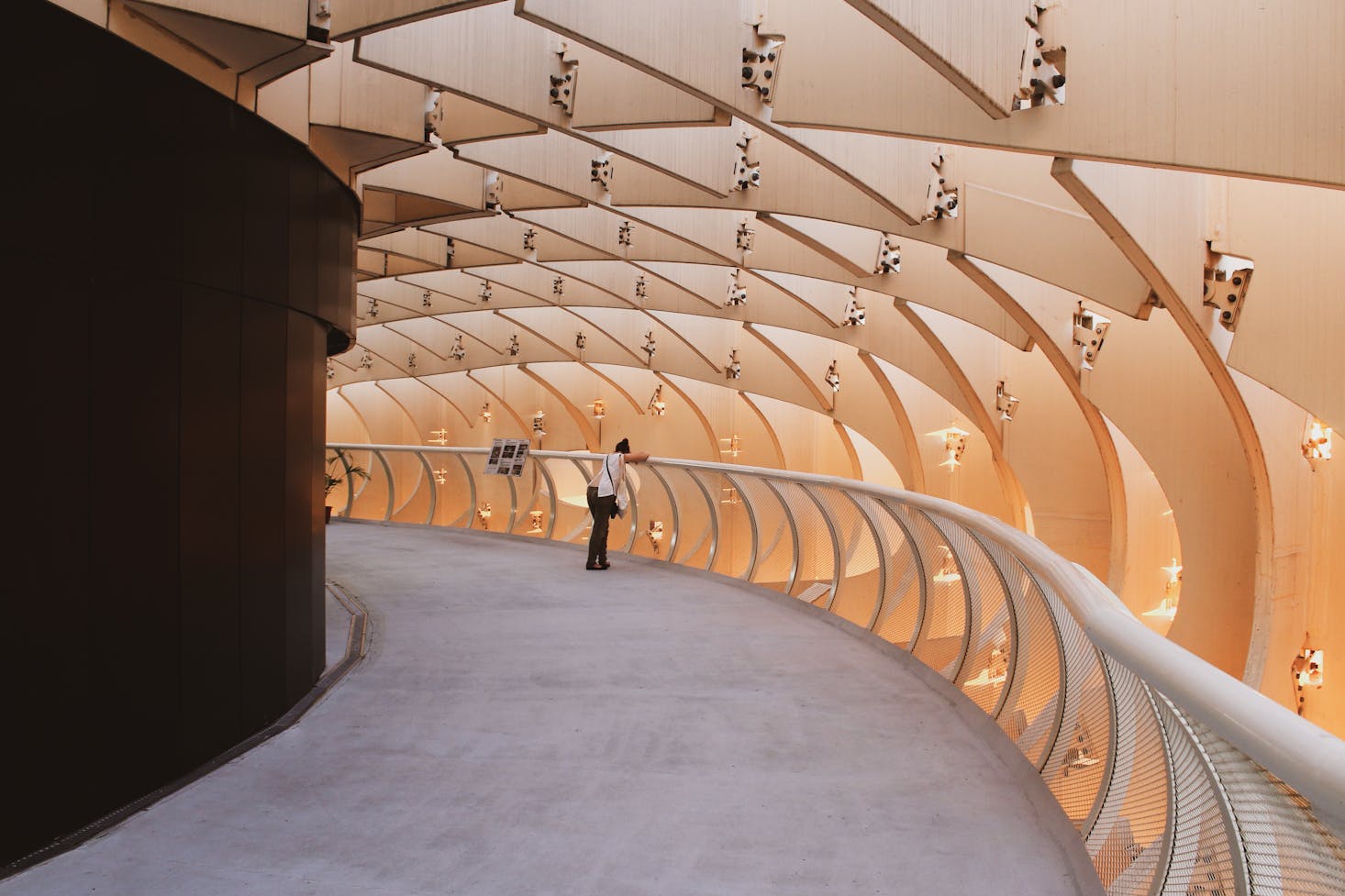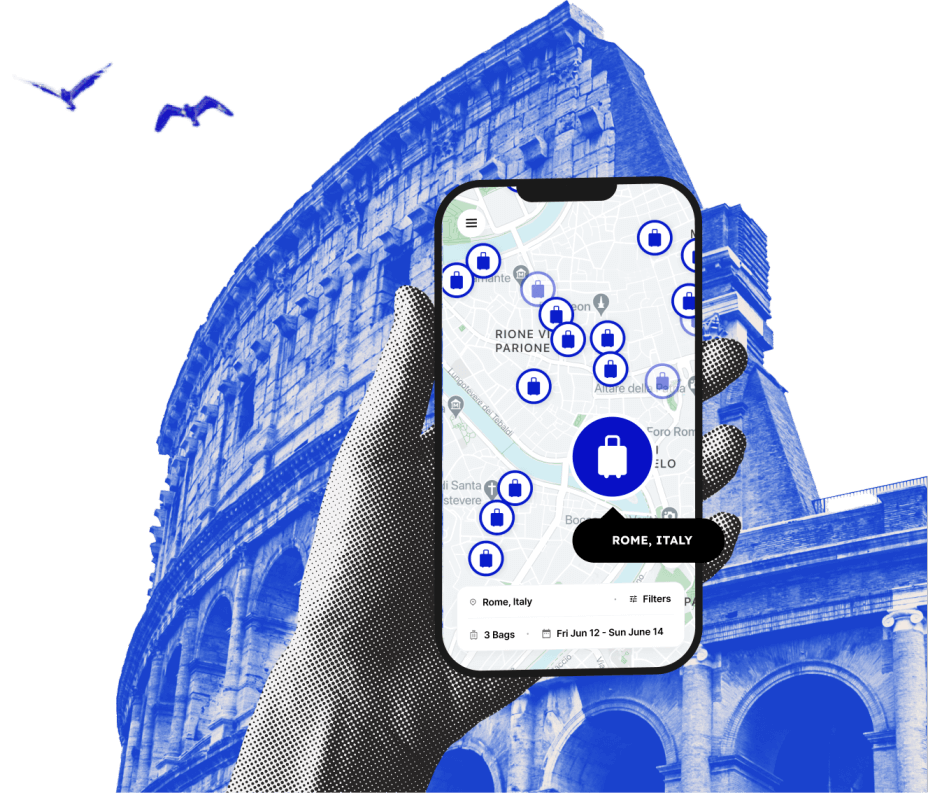The 10 Best Museums in Seville

In a city with such ancient origins as Seville, you would expect there to be some impressive historical artifacts to explore. And you'd be right. This city, home to multiple UNESCO World Heritage sites, is a perfect place to immerse yourself in the past. But it's also home to a wide range of art ranging from fine arts to contemporary art, housed in an important Spanish art museum in the heart of the city.
Of course, art museums and historic sites aren't always known for their generous bag policy. But don't worry; Bounce can help. By partnering with local businesses to offer convenient and affordable luggage storage in Seville and in cities around the world, Bounce makes sure you always have a place to store your things. Having one less thing to worry about makes it easier to enjoy the best museums in Seville and learn more about this fascinating city.
Located in sunny southern Spain, Seville is a fantastic place to explore art museums, Roman ruins, and strikingly modern treasures. It's also an excellent location to sample some of the best street food around, and the ideal place to immerse yourself in Andalusian culture. In short, if you have any interest at all in history and culture, you'll feel right at home here.
Real Alcazar
The Real Alcazar is one of Seville's most famous historic buildings, and a true treasure of Spanish history. Recognized as a UNESCO World Heritage site, the Alacazar is Europe's oldest historic palace still in use. Built for a Christian king, it incorporates many Islamic influences from Spain's period of Moorish rule, making it unique in the world and an absolute icon of the city. As one of Seville's top tourist attractions, you'll encounter crowds here, so it's definitely a good idea to leave heavy bags behind at a Bounce luggage storage in Seville. But it's well worth braving the crowds to see a true treasure of Spanish history.
Museo de Bellas Artes
The Museo de Bellas Artes, or Museum of Fine Arts, is the pride of Seville's artistic and cultural heritage. This incredible museum contains countless treasures, including works by some of Spain's greatest painters such as Velasquez and El Greco. Generally considered one of the greatest museums in all of Spain, second only to the Prado in Madrid, the permanent collection here contains priceless masterpieces, and the museum also hosts rotating exhibits that can give you a deeper understanding of the artists and their times.
Housed in a convent dating back to 1594, the building alone would be worth visiting even if it didn't contain so many masterpieces. But if you're a fan of art, you simply can't miss this stunning art gallery. Plus, if you visit on a Sunday, check out the outdoor art market in Plaza del Museo, and maybe pick up a piece to add to your own collection.
Archaeological Museum of Seville
Seville's history may start when the Romans colonized the town, but that wasn't the beginning of Seville's existence. This ancient town has deep roots, and Seville's archaeological museum is where you can discover more about both the ancient and more recent past. Founded in 1879, the museum contains the El Carambolo treasure, a huge hoard of gold dating back before the Roman Empire to the Phoenicians who settled in the area. It also contains statues, tombstones, and other monumental art from the nearby Roman city of Italica, including the famous Italica Venus. If you want to take a trip back in time to the distant past and discover more about Seville's beginnings, this is the place to do it. Located close to Maria Luisa Park in the heart of the city, the archaeological Museum of Seville is easy to reach by public transit, but will show you a glimpse of a vanished world.
Andalusian Center for Contemporary Art
Ancient art is all very well, but if you're more a fan of contemporary art, you'll be glad to know that Seville has plenty of that display too. The Centro Andaluz de Arte Contemporaneo is dedicated to modern and contemporary art, and also celebrates unique Andalusian culture. Housed in a former monastery turned ceramic factory, the Centro Andaluz de Arte Contemporáneo also provides a fascinating glimpse into Spain's history. But it's the art that takes pride of place here.
The collection spans the years from 1950 until the present and contains more than 3000 different works of art that show the artistic progress from the middle of last century up to the present day. The artists represented here may not be as famous as those you'll find in the Fine Arts Museum, but they do offer an encounter with the cutting edge of modern art. Who knows? You may well come away with a few new favorites after you visit.
Flamenco Museum
One of the quirkier museums in Seville, the Museo del Baile Flamenco located on Calle Manuel Rojas Marcos celebrates a uniquely Spanish - and specifically Andalusian - art form. Flamenco music and dance may be synonymous with Spain to the rest of the world, but every Spaniard knows that it was in southern Spain that this intoxicating art form was first developed.
Flamenco is all about passion. And at Seville's Flamenco Museum, you'll be able to see the costumes, instruments, and art associated with this vibrant dance. Though small, this is undoubtedly one of the best museums in Seville, especially if you want to learn more about the culture of the region itself. Interactive exhibits make this one of the best things to do with kids in Seville, and best of all, the museum also puts on regular flamenco shows so you can enjoy this dance the way it was meant to be seen and experienced. This is an absolute must-do for any visitor to Seville, so make sure to add it to your list.
Inquisition Museum
Housed in the impressive fortress of Castillo San Jorge, this Spanish Inquisition museum sheds light on a dark yet fascinating moment in Spain's history. The Spanish Inquisition was known throughout the world for its brutal tactics to enforce the rule of the church and eradicate what they saw as heresy, and it was in this medieval fortress where the first Council of the Inquisition was held.
This museum is on the smaller side, but it does provide a fascinating look into an important chapter of Spanish history. Admission is free, and you can even take a free audio guide that will explain more about the origins and influence of the Spanish Inquisition, so if you're fascinated by the darker side of history, you should definitely make the journey to the Triana neighborhood to see this interesting place.

Love discounts and traveling?
Sign up for our newsletter and get 10% off your next booking.

Antiquarium
Seville's Archaeological Museum is a great place to learn about the city's distant past. But if you want to get up close and personal with the physical remains of the past, there's nowhere better to do that than at Antiquarium. Located in a striking modern building just a short walk from Seville's grandiose Cathedral, Antiquarium is a subterranean archaeological treasure trove that was discovered during construction work on the city. Now, the glass-roofed structure resembles an aquarium, hence its unusual name, but this allows the ever-changing light of Seville to enter the ruins and bring the past to life.
Antiquarium houses ruins from the Roman, Moorish, and medieval periods of Seville's history, making it an excellent place to come to understand the changing fortunes of the city through the centuries. It's also an incredibly atmospheric location where you can feel the past breathing on the back of your neck, so if you're interested in history, this is one not to miss.
Museum of Arts and Traditions in Seville
Located in the leafy green space of Maria Luisa Park, the Museum of Arts and Traditions in Seville - or Museo de Artes y Costumbres Populares in Spanish - is certainly a mouthful. But it's also one of the most interesting museums in the city. Instead of telling the tale of kings, popes, and princes who shaped the history of the city and of the country, this fascinating museum explores the daily life of Seville residents through the centuries and gives you a glimpse of the forces that shaped Andalusian culture from the bottom up.
Sitting just opposite Plaza de America where you'll find the Archaeological Museum, the Museum of Arts and Traditions offers the perfect counterpoint to the relics of the ancient past. The galleries of the museum explain more about the various industries that have supported Seville through the years, such as winemaking, embroidery, ceramics, and metalwork. This collection is a fitting tribute to the skill and ingenuity of the nameless craftspeople that have made Seville home through the years, and is a great place to visit if you want to see more of the lives of real people.
Italica
The Roman ruins of Italica lie just outside Seville, but a visit to the complex will feel like entering another world. Italica was once the third-largest city in the entire Roman Empire, and was the birthplace of the Emperors Trajan and Hadrian. The 25,000 seat amphitheater is a particular highlight of this ancient town, as are the well-preserved mosaics that bring the past to life. Although most of the more spectacular artifacts from Italica have been relocated to Seville Archaeological Museum, it's still worth a bus ride from Plaza de Armas bus station out to Italica to see where they came from.
Naval Museum
Chances are you'll be visiting the Torre del Oro, Seville's 13th-century military watchtower known as the Golden Tower, anyway. While you're there, don't miss the opportunity to visit Seville's naval museum. After all, it was Spanish naval prowess that allowed the country to establish an empire that spanned the globe, making seafaring a vital part of Spain's history. Although this museum is small, they hold an interesting collection of maps and navigational instruments, and the tower is worth visiting all by itself.
What are the best free museums in Seville?
Historic structures in Seville don't come much more important or impressive than the Real Alcazar. But the striking palace can be seen absolutely free if you visit on a Monday evening, making this undoubtedly one of the best free things to do in Seville. If you've already purchased tickets for the Alcazar, hold onto them. They'll get you free admission to the Antiquarium. Also, Seville's Fine Arts museum is free for EU citizens. Plus, it's free to visit the Roman ruins of Italica and the Spanish Inquisition museum.
Which are the best museums in downtown Seville?
Seville's old town core, the Casco Antiguo, is home to some of the city's most striking historical monuments and museums. You'll find the Real Alcazar here, along with Antiquarium and the Museum of Fine Arts. Also, the Torre del Oro and its naval museum are only a short walk away.
Are there any cheap museums in Seville?
Along with its free museums, Seville is blessed with some great bargains for cultural highlights. If you're not an EU citizen, admission to the Museum of Fine Arts costs only €1.50, which is a blessing considering how much this museum holds. Also, the Antiquarium only costs two euros to visit, making it a great bargain in the center of the city.
Conclusion
Seville has so much to offer fans of history and culture that you could stay in the city for weeks and still not run out of things to do. And thanks to its various free and cheap museums, you won't have to spend a fortune to enjoy some of the best of Spanish and Andalusian culture, too. Drop off your bags at a Bounce luggage storage in Seville, and you'll be in the ideal place to learn more about human history and ingenuity. And along the way, you'll discover the vibrant charm of this ancient Spanish city for yourself.

Love discounts and traveling?
Sign up for our newsletter and get 10% off your next booking.
